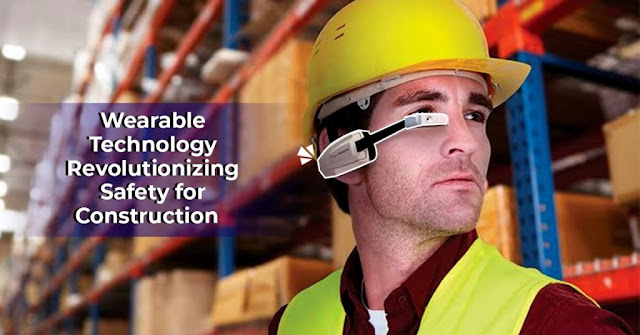Are you a construction professional seeking a feasible solution for a high-tech construction environment?
Opt for wearable technologies, make a splash in the market, and enhance your safety in a hazardous construction environment.
Even though the technology is at an early stage of adoption, it shows potential for the construction companies to improve critical areas that drive profitability and safety.
The construction Wearable Technology are the advanced electronic devices that the construction workers wear on their bodies, clothes, or protective equipment to gather and deliver information about the working environment, activities, and biometric conditions.
Using the technology, onsite workers receive an automatic alert about a hazardous situation before the occurring of an accident.
Construction managers can monitor and measure the level of fatigue and warn the workers while they move close to dangerous zones.
An automatic system informs the site workers and their managers about the need for an instant behavior change to prevent injury.
Wearable Devises Improving Safety
- Providing audible or vibration alarms for notifying workers when they are close to danger, like moving equipment or a leading-edge
- Warning the workers of a hazardous movements like bending, twisting, or lifting
- Alerting workers when they are imminent to fatigue level
- Relieving muscular and joint stress by supporting through lifting
- Informing emergency personnel and rescuers of the injured worker’s location
Kinds of Wearables
Researches confirm the extensive use of wearable technology in construction over the next ten years.
Presently, technology companies are associating with contractors for running pilot programs that check different types of wearables.
Typical wearables for the construction sites include:
- Visual: Devices using optical aids on glasses, hard hats, and visors to produce images for remote viewers are called Visual wearables. The devices add value to training, quality control, and other circumstances where the visual depiction of a concept is necessary. The wearable connects field workers to far-flung supervisory employees, facilitating both parties to view items at the same time. Sharing visual data on actual work environments improves training, instruction, and verification of practices.
- Tactile: Devices that act as an exoskeleton for increasing the strength and durability of the users are known as Tactile wearables. The wearables restrict the force on the muscular-skeletal frame of the wearer, reducing the potential for strains and back injuries while enhancing a wearer’s capacity.
- Sensing: Sensing wearable helps to sense the biological, environmental as well as physical conditions of workers. The device also analyzes data by using edge computing and notifying the employee of hazardous situations that may cause an injury. Sensors are available in various forms like badges, biosensors, gyroscopes, and many more. The wearables record and assess the wearer’s physical condition, location, and environment. The technique for deploying the sensor includes an attachment to hard hats, safety glasses, and personal safety equipment. For example, construction site workers can attach clip-on wearables to shirts, belts, and vests. They can also embed the wearables in the sole of shoes.
Value Addition for Construction Managers
Wearables are significant for individual workers as well as for construction managers, who can enhance control site safety in the right manner.
Wearable Technology feeds data to customize dashboards, allowing construction managers to assess performance data about the entire organization, specific to job functions and employees.
Subsequent analysis of the data identifies particular areas that have the potential for injuries and provides the opportunity to amend operations before accidents.
Final Thought
The wearables wave is coming up quickly and gathering speed. The devices will be more predominant with Jobsite connectivity and data aggregation.
As a result of which, every contractor and construction company in the USA must be actively investigating and evaluating the way the wave can enhance AEC business.



Comments
Post a Comment